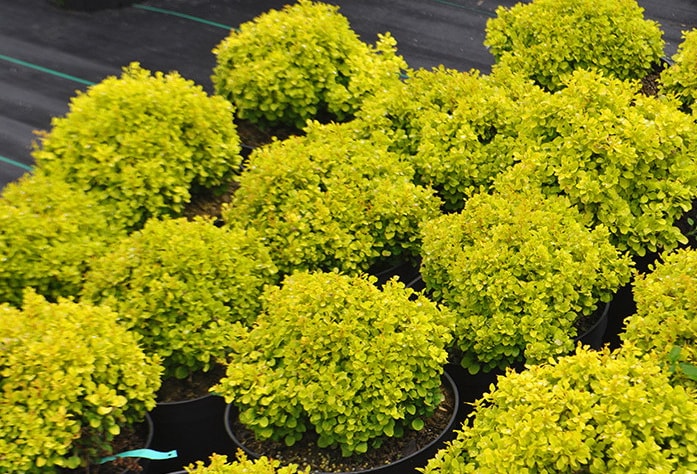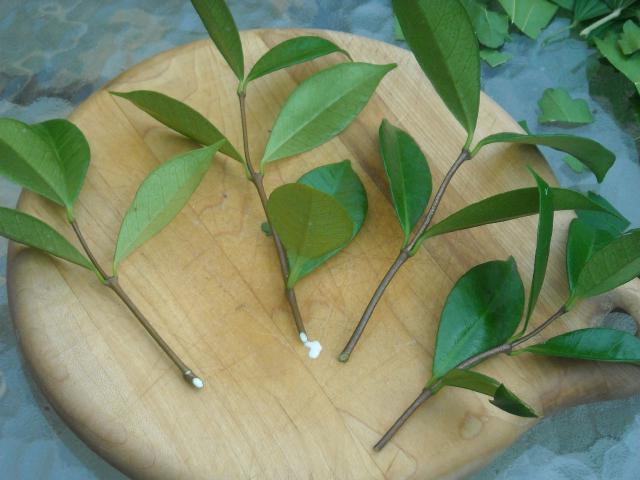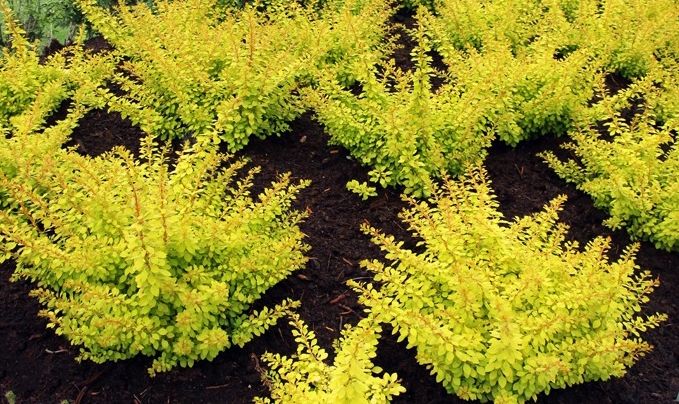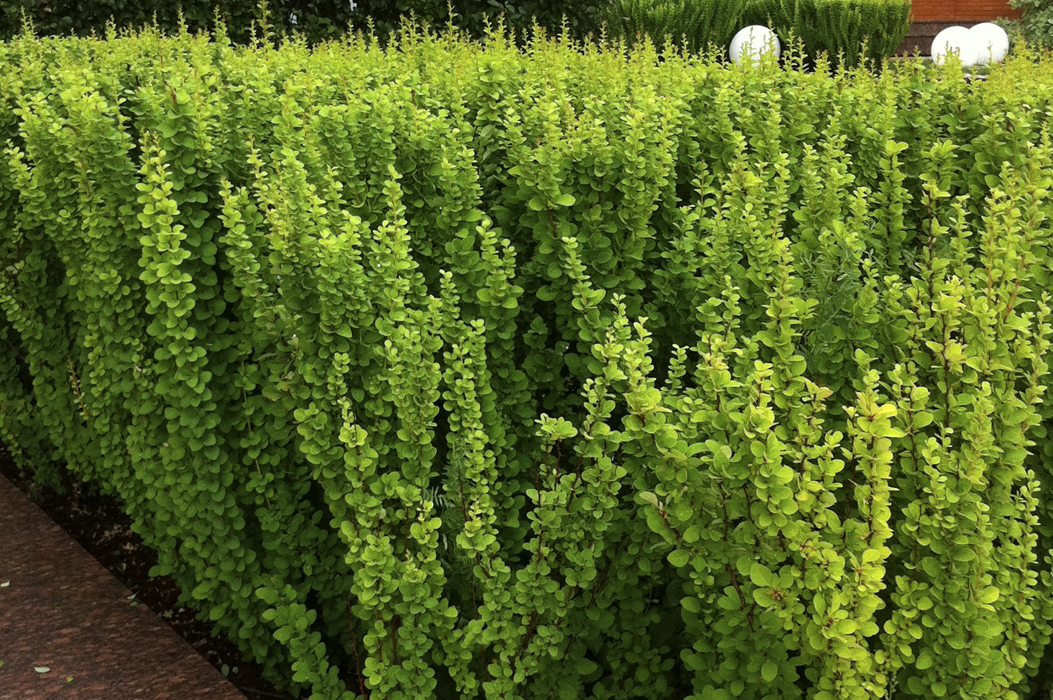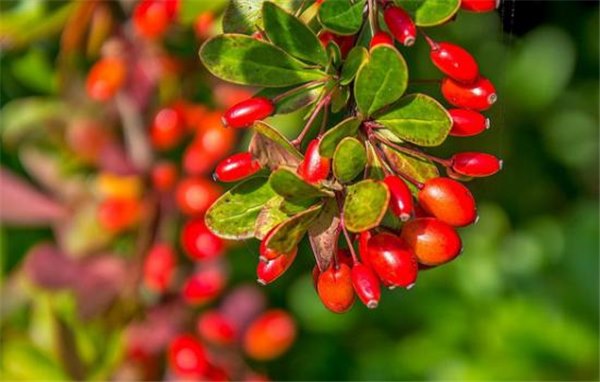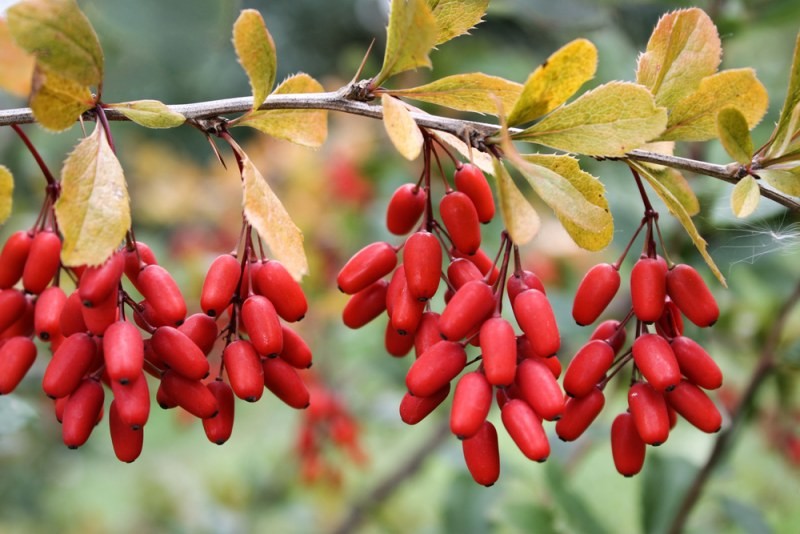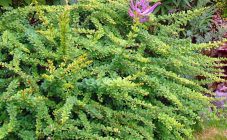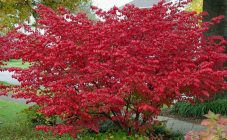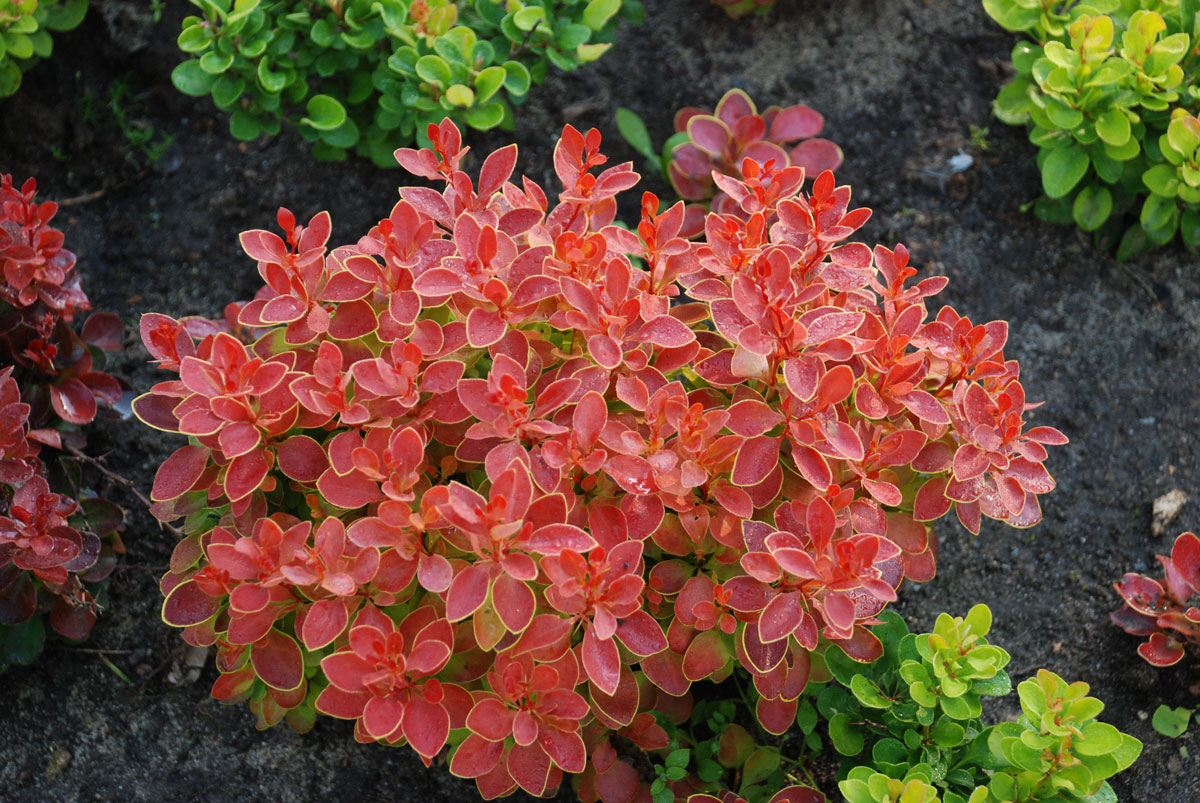Content:
Most often, in order to give the garden a beautiful look, barberry is used as an ornamental plant. One of the most popular of its types is the Thunberg barberry. This is due to the fact that it is the varieties of this type that are decorative and are ideal for landscaping the area.
The history of the barberry Thunberg
This type of barberry came to Russia from eastern countries such as Japan and China. In these countries, barberry grows on mountain slopes. For this reason, it easily tolerates frost and drought. It is grown both in the southern part of the Moscow region and in the northern one. At the same time, do not be afraid that severe frosts will damage the plant. In this case, they can die only shoots that are one year old, the rest of the bush will remain unharmed.
Barberry Thunberg Aurea is ideal for landscape design. The shrub has a beautiful and compact appearance and does not require any special soil selection. In addition, it does not at all get sick with diseases such as powdery mildew and rust. In addition, this species feels great in the city and adapts to a gas-polluted environment.
Thunberg barberry is preferable for decorative gardening due to the small size of the leaves. In addition, they differ in color. Provided that the shrub grows in the open sun, its leaves will have a lemon yellow color.
Characteristics and features of the variety
In order to appreciate the barberry Aurea, consider the description of this variety. Seeing a barberry bush in cloudy weather, you might think that only this plant is illuminated by the sun. As already mentioned, the Aureya barberry shrub differs from others in its unusual leaf color. The bright yellow leaves draw attention to themselves and create a similar effect.
It grows low, no more than eighty centimeters, but at the same time compact. The crown develops up to one and a half meters in width. But it should be noted that the development of this plant is very slow.
In the autumn, the color of the leaves changes slightly: from yellow it turns into an orange-yellow color. On young pagons you can see thorns, also yellow. The flowering shrub begins from April to May. It is covered with bright yellow flowers, which later turn into red berries. In winter, the shrub does not lose its decorative appearance, since its crown will be covered with bright berries.
When decorating the garden landscape, designers very often use the barberry Aurea, this type of plant goes well in the composition. They can be used to decorate stone gardens and artificial ponds, paths or walls and fences. It is perfect for decorating a front door. Due to its appearance, the Thunberg barberry aurea got its second name - "plant lantern". Among the design ideas you can find:
- as a low curb, while it can be left in its natural form or cut in the desired shape;
- in a flower garden, barberry Aurea will look like an unusual ever-flowering flower;
- if you use several varieties of barberry with foliage of different colors, for example, with Thunberg barberry "Atropurpurea Nana", this combination will give the garden an unusual look.
The main feature of the variety is that this plant is very strong compared to others. It can withstand all weather changes, be it strong wind, rain or drought. Grows calmly in a polluted environment and at the same time allows itself to be cut.
The only thing that Baraaris Aureya doesn't like is the shadow. In the shade, the plant shows its character, and its beautiful leaves become dark, lose their attractiveness. The correct combination of shadow and light will only add color to it. Regardless of the fact that the plant tolerates drought, it will thankfully respond to enough moisture.
Features of growing varieties
There are several ways to breed barberry:
- grafting;
- seed reproduction;
- dividing the bush;
- vaccinations;
- layering.
Of all these methods, the easiest way to choose is the seed method and cuttings. In this case, with the seed method, the seed must be properly prepared. First of all, it is stratification. In order to stratify the seeds, they need to be poured into a nylon bag and put in moss or sawdust. Store in this form, at a temperature not higher than five degrees, they need to be stored until April, or even May, depending on when sowing is planned.
You can sow seeds in the autumn, while the depth of the groove should be at least two to three centimeters. Before planting, you need to determine the acidity of the soil. In case of increased acidity, wood ash and lime must be added to the soil. Under each barberry bush, it is necessary to put a mixture of sand, humus and garden soil in equal proportions into the hole. In addition, to prevent stagnation of water at the root system of the culture, drainage must be installed at the bottom of the hole. You can use pebbles or rubble for this.
If the seedlings are purchased, then it is necessary to carefully examine the root system. It should be closed from the external environment with an earthen lump. Before planting, this lump must be thoroughly watered.
The plant is completely unpretentious in its care, but, nevertheless, two years after the plant was planted, mineral fertilizers must be applied under each bush. They do it as follows:
- In early spring, the plant needs to be watered with a urea solution. To do this, use twenty, or even thirty grams of fertilizer per ten liters of water;
- At the beginning of September, a second feeding is done. Phosphorus-potassium fertilizers are used for it.
Alternatively, you can immediately apply the entire complex of fertilizers in the spring, and then you do not need to feed the culture in the fall. It is also necessary to revive the barberry in the third and fourth years of plant growth.
Despite the fact that Aurea tolerates dry weather, it is still advisable to water it. For this, at least two buckets of water must be poured under each bush. It is recommended to mulch the root system of the plant. Thus, moisture will remain in the soil, and besides, the gardener will have less work, since weeds will not grow under the bush. Accordingly, there will be no need to loosen the soil and do weeding. If you use tree bark for mulching, then it will look more impressive and beautiful.
The plant is sheared in order to give the crown a beautiful appearance. In most cases, old branches and young shoots are cut, which are shortened by no more than ten centimeters. If the barberry is planted as a hedge, then when it takes root and begins to develop, the plant must be cut in half. Subsequently, the formation of the crown of the barberry should be done twice a year: the first time - in May, the second time - at the end of August.
Advantages and disadvantages
The Thunberg barberry has many advantages, among which it should be noted:
- Decorativeness of the plant. Even the natural shape of the crown, the color of the leaves, the small size of the shrub are ideal for use in landscape design;
- The plant can be used as an addition to other plants and planted alone. They can be used to decorate curbs, alpine slides, hedges;
- The barberry shrub has a strong root system, so it can also be used to strengthen various ravines, slopes and banks;
- The plant does not succumb to diseases and pests.
Despite a number of advantages, the plant also has disadvantages, among which the main one is thorniness. This is what makes it difficult for the gardener during work. It is difficult to weed the soil near the bushes, cut off the shoots.
Despite the frost resistance, the tops of the young branches freeze, but this can be corrected by a haircut. The plant recovers very quickly.
The shrub of Thunberg Aureya barberry will decorate the garden and give it a beautiful look. At the same time, caring for the plant is minimal, since it does not require special attention to itself.
